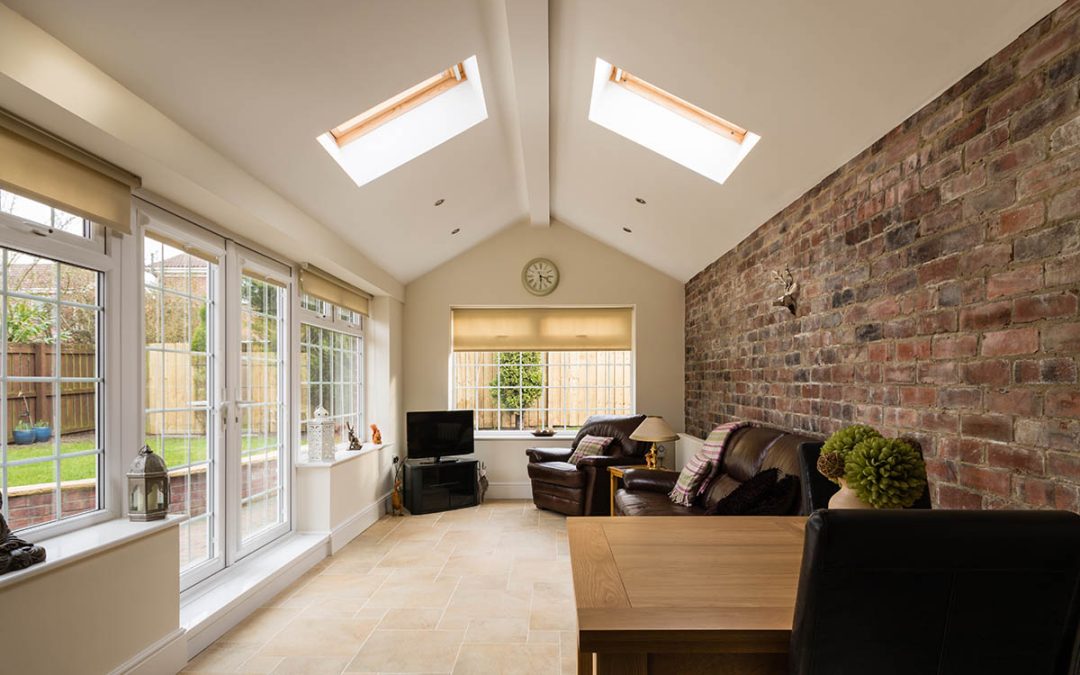Thinking about expanding your living space? A house extension isn’t just about adding more rooms—it’s about creating new possibilities for your home. Whether you’re dreaming of a spacious kitchen-diner, an extra bedroom, or a snug home office, extending your house can transform your living experience and significantly increase your property’s value.
Understanding the basics of house extensions
Delving into house extensions reveals a multitude of options, each tailored to enhance your living space and property value. This section explores the fundamental aspects you’ll need to consider before starting on this transformative home improvement project.
Types of extensions
House extensions vary widely, depending on your needs, the existing structure, and local planning regulations. Understanding the types of extensions can help you make an informed decision:
- Single-storey extensions: Often added to the side or back of a house, these extensions can accommodate a new kitchen, dining area, or utility room. For instance, a rear extension can seamlessly extend your kitchen into a large open-plan kitchen-diner that connects with your garden.
- Double-storey extensions: These add space at two levels and are ideal for adding bedrooms and bathrooms above a ground-floor extension. They’re cost-effective per square meter since they make use of the existing foundations and roof structure.
- Conservatories: Built with glass and a framework, conservatories are a lighter, often cheaper alternative to a full brick extension. They provide a sunny, garden-connected space, popular for lounges or greenhouses.
- Loft conversions: Not a traditional extension but a transformation of existing space, loft conversions can add considerable value and living space by turning an attic into bedrooms, offices, or recreational areas.
- Over-structure extensions: If your property includes a garage or an existing extension, building over these can be a strategic way to expand without altering the footprint of your home.
Common mistakes to avoid
Extending your home is a significant investment and comes with potential pitfalls. Here are common mistakes to steer clear of:
- Neglecting planning permissions: Always check if your extension needs planning permission. Ignoring this can lead to legal issues and the need to dismantle unauthorised work, especially if the structure.
- Underestimating costs: Set a realistic budget that includes contingency funds. Costs can escalate due to unexpected issues like unsuitable ground conditions or changes in material prices.
- Overlooking the impact on existing space: Consider how the new extension will affect natural light and the flow of your home. A poorly planned extension might block light to existing areas or create impractical living spaces.
- Choosing the wrong builders: Ensure you hire reputable builders with experience in similar projects. Check their credentials, previous work, and reviews to avoid substandard construction that could devalue your property.
- Ignoring future needs: Design your extension for flexibility, considering how your needs might change over time. An adaptable design can accommodate future modifications more easily than a highly specialised layout.
By avoiding these common mistakes, you ensure your extension increases both your home’s functionality and its market value.
Planning your house extension
Following the exploration of house extension benefits and types, understanding the planning process is crucial. This ensures your extension not only meets your expectations but also adheres to legal and practical requirements. Preparing thoroughly can help prevent common pitfalls and maximise the value added to your home.
Budget considerations
When planning your house extension, developing a comprehensive budget is crucial. Costs can fluctuate significantly depending on the size, materials, and style of the extension. For example, a straightforward single-storey extension typically ranges from AUD 2,300 to AUD 2,900 per square metre, while more intricate projects, such as double-storey extensions or those utilising high-end materials, can exceed AUD 3,300 per square metre.
To manage your finances effectively:
- Itemise expenses: Break down the costs into categories such as materials, labour, design fees, and any required permissions.
- Set aside a contingency fund: Allocate approximately 10-20% of your total budget for unforeseen expenses.
- Consider long-term savings: While it’s tempting to opt for cheaper solutions, investing in energy-efficient materials and technologies might save you money in the long run.
Additional storage
A house extension can be an exciting yet challenging time. While expanding your living space promises a transformed home, the construction process often brings disruption. Renting a storage unit offers a practical solution for safeguarding your furniture, appliances, and personal belongings from dust, debris, or potential damage during building works. By clearing your home, you’ll create a safer, more organised environment for builders to work efficiently. Moreover, a storage unit ensures your possessions remain secure and easily accessible, providing peace of mind as you focus on creating your dream extension.
“A temporary storage solution can make all the difference during a home extension,” says James Porter, a Storage Specialist. “Not only does it protect your belongings, but it also creates a clutter-free environment, making the construction process smoother and more efficient.” – Says spokesperson from Access Storage Adelaide
Choosing the right architect and builders
Selecting competent professionals is crucial to the success of your extension project. An architect will not only help bring your vision to life but also ensure that the design complies with local planning regulations. Similarly, hiring skilled builders guarantees that the construction phase progresses smoothly.
- Check credentials and references: Verify the qualifications and past work of your architect and builders to assess their capability and reliability.
- Review portfolios: Look at previous projects to determine if their style and quality match your expectations.
- Get multiple quotes: Comparing quotes from several professionals helps you understand the cost breakdown and secure the best service at a competitive price.
By carefully choosing the right team and managing your budget, you’ll increase the likelihood of a successful, stress-free house extension.
Legal and regulatory compliance
Ensuring your house extension complies with local laws and planning regulations is crucial. By understanding and adhering to these requirements, your project proceeds without legal hindrances and maintains good relations with the local community.
Planning permissions and regulations
Obtaining planning permission is often necessary before you start your house extension. This permission ensures that your plans align with local development guidelines, such as building size, appearance, and impact on neighbouring properties and the environment. You can submit your planning application through your local council’s planning portal. The decision process typically takes about eight weeks, but complex proposals may require more time. Approval hinges on factors like design suitability, use of materials, and compliance with building codes. In some cases, permitted development rights allow small extensions without full planning permission, but always verify this with your local planning authority before proceeding.
Neighbour consultations
Consulting your neighbours is not only courteous but sometimes a legal necessity under the Party Wall Act 1996 if your extension affects shared walls or boundaries. Discussing your plans can preempt objections and issues, which, if unresolved, can escalate to the local council and delay your project. Provide clear, detailed plans and the timeline of your work to your neighbours to give them a comprehensive understanding of the project’s scope and expected impact. Remember, maintaining open lines of communication with your neighbours throughout the building process can help in preserving a harmonious relationship and facilitate smoother project execution.
Designing your extension
Once you’ve navigated the planning process and selected your team, designing your extension is the next critical step. This stage blends aesthetic appeal with practical functionality, ensuring your new space not only looks great but also enhances your living quality.
Aesthetics and functionality
Creating a visually appealing design that complements the existing structure of your home ensures a seamless integration of the new extension. Consider the architectural style of your house; whether it’s modern, traditional, or something unique, the extension should echo this design language to maintain consistency. Material choices, such as bricks, wood, or glass, also play a crucial role in crafting an extension that harmonises with the current building.
Functionality is equally important. The layout of your extension should address your specific needs, whether you’re adding a bedroom, expanding your kitchen, or integrating a home office. Optimal use of space matters, especially in smaller properties where every square metre counts. Include features that enhance usability and comfort, like custom lighting solutions, ample power point installations, sufficient storage, and smart home technology.
Sustainable and eco-friendly options
Incorporating energy-efficient designs and materials can markedly reduce the environmental impact of your extension while providing long-term savings on energy bills. Consider using sustainable materials such as reclaimed wood, recycled glass, and non-toxic paints. These materials are not only better for the environment but can also add unique character and appeal to your home.
Solar panels, energy-efficient glazing, and enhanced insulation are vital components of an eco-friendly extension. These elements help maintain temperature, reduce energy consumption, and might entail eligibility for green rebates or reductions in property taxes. Additionally, consider including rainwater harvesting systems and xeriscaping (low-water-use landscaping) to further your extension’s sustainability.
Conclusion
Starting on a house extension project can be a transformative endeavour for both your living space and property value. By understanding the different types of extensions available and the essential steps involved in planning and execution you’re well-prepared to make informed decisions. Remember the importance of choosing the right professionals and ensuring all legal requirements are met to facilitate a smooth process. With careful consideration of design and functionality your extension will not only meet your current needs but also adapt to future requirements. Embrace the opportunity to enhance your home’s efficiency and sustainability with smart choices in materials and technologies. Ready to expand your living space? Your ideal home extension awaits with trusted tradies near me.
Frequently Asked Questions
What are the main benefits of house extensions?
House extensions not only add additional living space but also enhance the overall functionality and market value of your property. They allow for tailored improvements like larger kitchens, extra bedrooms, or specialised home offices.
What are some common types of house extensions?
Common types include single-storey extensions, double-storey extensions, conservatories, loft conversions, and over-structure extensions. Each type serves different needs and integrates various design aspects to complement the existing structure.
What are the key mistakes to avoid in house extension projects?
Major mistakes include overlooking necessary planning permissions, underestimating budgets, failing to consider the impact on existing spaces, choosing improper builders, and ignoring future needs. Avoiding these can lead to a more successful project.
How should I prepare for a house extension project?
Preparation should include thorough planning to ensure legal compliance and practical execution. Establish a detailed budget, consider energy-efficient designs to decrease future expenses, and select the right architect and builders based on their credentials and past work.
Why is legal and regulatory compliance important in house extensions?
Ensuring compliance with local laws, building codes, and planning regulations prevents legal issues and fosters good community relations. Necessary actions might include obtaining planning permission and consulting neighbours, especially under the Party Wall Act 1996.
How can I choose the right architect and builders for my extension?
Check the credentials of your architect and builders, review their portfolio of past projects, and obtain multiple quotes. Choosing the right professionals ensures that your vision is accurately brought to life while adhering to all regulatory standards.
What should be considered during the design phase of an extension?
The design should blend aesthetic appeal with practical functionality. It’s crucial to create a visually cohesive extension that complements the existing home while optimising space usability and incorporating comfortable and practical features.
How can I make my house extension sustainable?
Consider using energy-efficient designs and sustainable materials. Options like solar panels, energy-efficient glazing, and rainwater harvesting systems not only reduce environmental impact but can also offer long-term savings and potential tax benefits.






